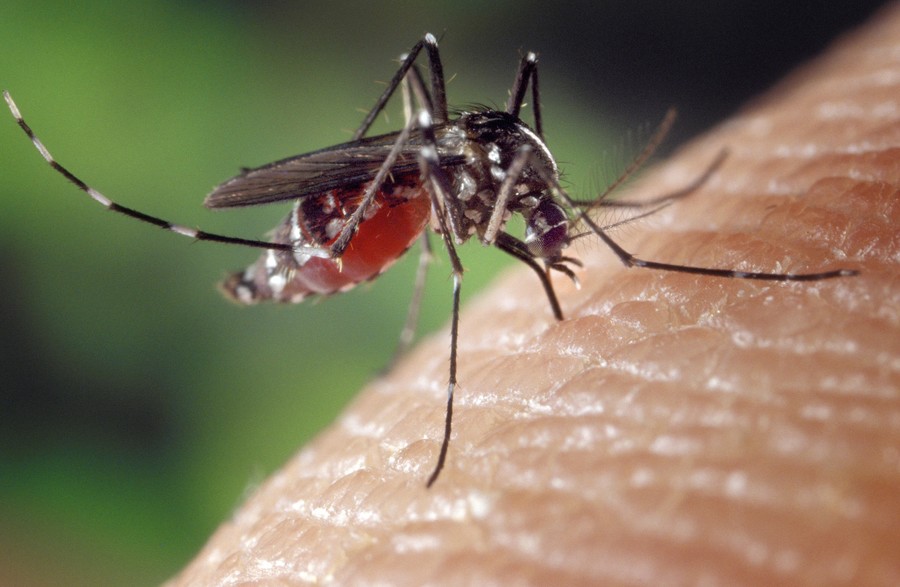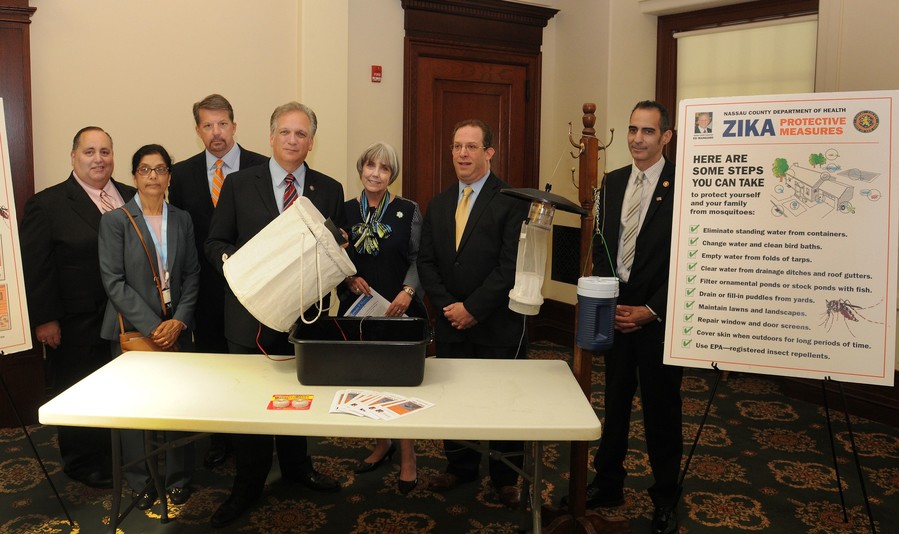Nassau battling mosquitoes as fears of Zika virus loom
With fears of the Zika virus looming, Nassau County plans to intensify efforts to trap and study mosquitoes this summer, while also educating the public on how to reduce mosquitoes around their homes, County Executive Ed Mangano and Health Commissioner Dr. Lawrence Eisenstein said at a news conference on May 25.
“With the spread of the Zika virus overseas, we urge residents who travel to take precautions,” Mangano said.
The Zika Action Mosquito Trapping and Surveillance Plan aims to help county residents identify spots where mosquitoes are more likely to lay their eggs and offer tips on how to eradicate them. According to the plan, residents are urged to:
- Wear long socks and protective clothing while outside for long periods of time.
- Filter ornamental ponds with circulation pumps.
- Maintain well-groomed lawns to prevent overgrowth.
- Check window or door screens and repair as needed to ensure mosquitoes cannot enter homes.
- Clear leaves and debris to allow water to flow freely from drainage ditches and roof gutters.
- Change the water and clean birdbaths and empty water that collects in tarp folds.
Mosquitoes’ biggest breeding sites are the ones that homeowners least think are problematic, Mangano cautioned. “What people don’t know is that there can be a half-inch of water in a child’s toy or in a bottle cap, a flowerpot saucer or water can,” he said. “That half-inch is enough for mosquitoes to hatch eggs and reproduce.”
Eisenstein said it is imperative to remove standing water from any container or surface around the home. This way, mosquitoes that carry the Zika or West Nile viruses can be eliminated.
The Department of Health has started testing sites around Nassau, according to Mangano. “Under the plan, the county Department of Health has begun trapping and collecting mosquitoes at 42 sites to prevent the spread of diseases such as encephalitis, West Nile and Zika viruses,” he said.
According to projecthope.org, the Zika virus first spread from Africa and Asia to the Pacific island of Yap in 2007. On May 15, 2015, Brazil reported its first case. In November, Brazil declared a national public health emergency, as cases of suspected microcephaly — a birth defect in which a baby’s head is significantly smaller than normal — were reported. By Jan. 20, almost 4,000 cases of skull deformities were reported worldwide. The virus is rapidly spreading, prompting the Obama administration to request congressional approval for $1.8 billion in emergency funds for Zika virus prevention domestically and abroad earlier this year.
“We’ve collected thousands of mosquitoes — last summer, for example, we trapped 30,000 of them — and the species of mosquito known to carry the Zika virus was the Aedes aegypti,” said Eisenstein, of Bellmore. He urged the public to watch for the mosquito, noting one characteristic: “The Aedes mosquito, unlike many others, is a daytime biter.”
The Aedes mosquito comprises about 3 percent of the mosquito population, according to Eisenstein. Although many are concerned about the Zika virus spreading to Long Island, Eisenstein said officials are preparing as much as possible for an epidemic-level outbreak.
“We’re not expecting disease transmission in Nassau County, but we are preparing for it,” he said. “The county is currently offering free mosquito dunks, which are used to control mosquitoes chemically, for Nassau residents.
Call (888) 364-4723 to receive the dunks. For more information on the Zika virus, symptoms and travel advisories, visit www.cdc.gov/zika.

 47.0°,
Mostly Cloudy
47.0°,
Mostly Cloudy 







